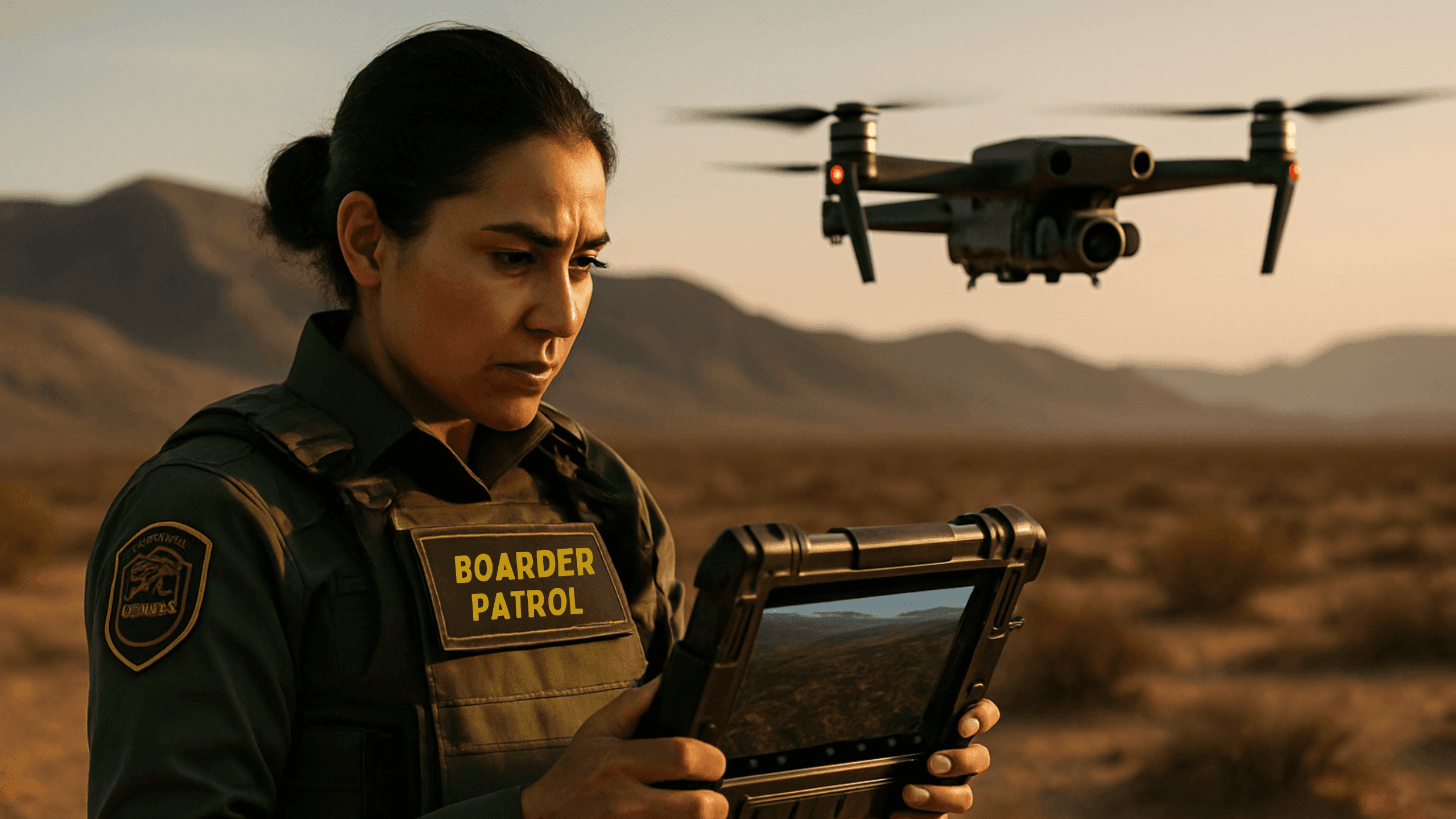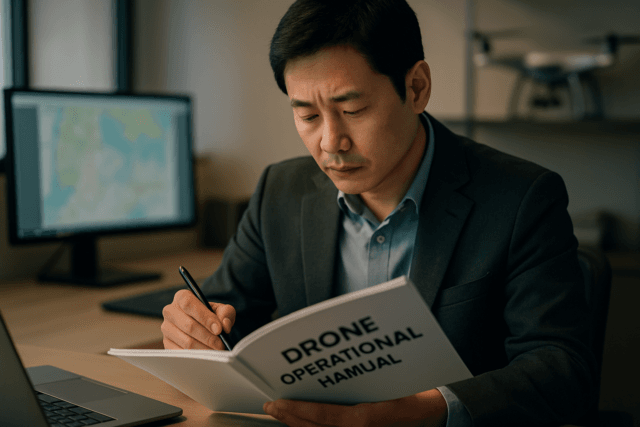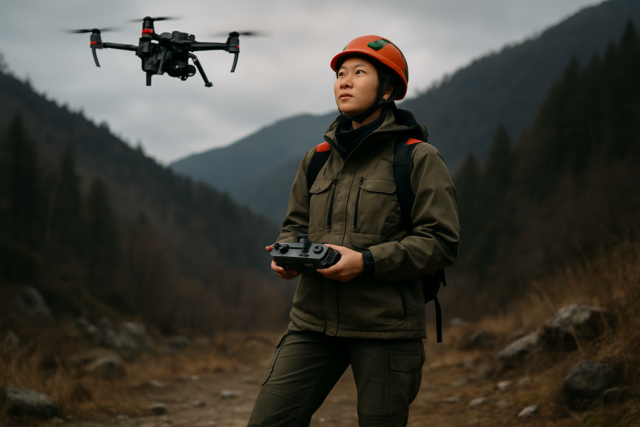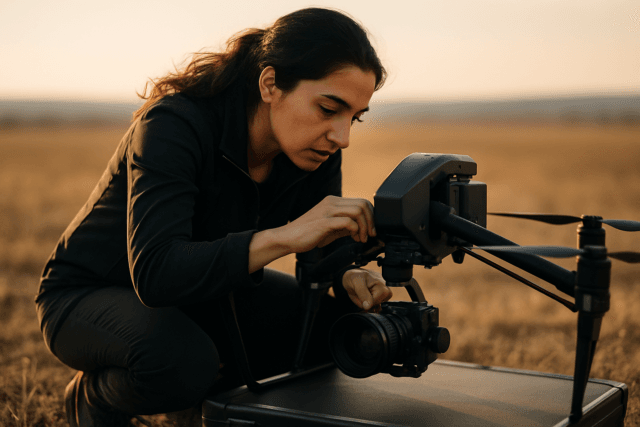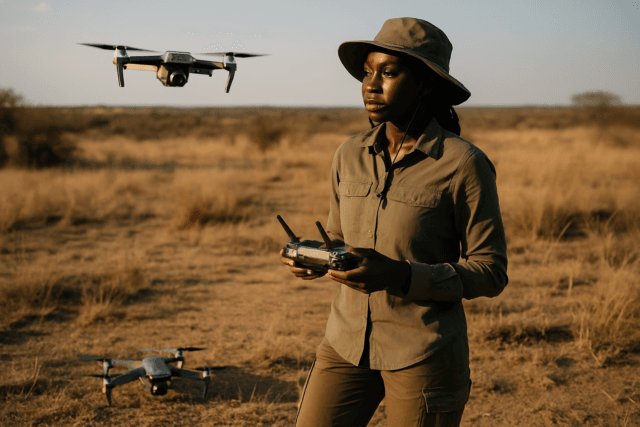Drones, or Unmanned Aerial Vehicles (UAVs), have become indispensable tools for modern border security, offering unparalleled advantages in surveillance, threat detection, and response across vast and challenging terrains. Their integration into border patrol operations has evolved significantly since early models like the Predator B in the early 2000s, with continuous advancements in endurance, payload capacity, and autonomous features.
Border patrol agencies worldwide are increasingly relying on a diverse fleet of drones tailored to specific operational needs, from monitoring illegal immigration and drug trafficking to aiding search and rescue missions.
Types of Drones Utilized in Border Security
Border patrol agencies employ various drone types, each offering distinct advantages for different surveillance scenarios:
Fixed-Wing Drones
Resembling miniature airplanes, fixed-wing drones are a cornerstone of border patrol operations due to their efficiency and extended flight capabilities. They excel in long-distance surveillance missions, providing a broad overview of extensive border regions. Examples include the Predator B and Guardian drones, which have been used by U.S. Customs and Border Protection (CBP) since 2005. The Sword 3.0 is another advanced fixed-wing UAV designed for long-range surveillance with options for extended endurance.
Multi-Rotor Drones
Characterized by multiple rotors (such as quadcopters and hexacopters), multi-rotor drones are highly agile and can hover, making them ideal for precision and close-quarters surveillance. Their flexibility allows them to navigate confined spaces and closely monitor specific areas of interest. The DJI Mavic 3T and Autel EVO II Dual 640T Enterprise V3 are examples of high-altitude multi-rotor drones capable of scanning large areas and providing real-time data. Teal Drones’ Golden Eagle, a high-performance multi-rotor drone, has also been procured by U.S. Customs and Border Protection for airborne reconnaissance, surveillance, and tracking.
Hybrid VTOL Drones
Hybrid Vertical Takeoff and Landing (VTOL) drones combine the best features of fixed-wing and multi-rotor designs. They can take off and land vertically like a multi-rotor but transition to fixed-wing flight for extended coverage, offering versatility in dynamic border environments. The JOUAV VTOL fixed-wing UAVs and the Draganfly Long-Range Surveillance Drone are examples that offer long endurance with vertical takeoff and landing capabilities. Skyfront’s Perimeter 8 hybrid drone boasts impressive endurance of up to 5 hours and a range of up to 100 km. Shield AI’s V-BAT is another tactical VTOL UAS designed for border security, capable of over 13 hours of flight time.
Tethered Drones
Tethered drones are connected to a ground station via a physical cable, which provides continuous power and secure data transmission, making them ideal for persistent, long-duration surveillance over fixed locations. Elistair’s tethered drones can remain airborne for day-into-night missions, covering areas up to 10 square kilometers. These systems are particularly useful for fixed crossing points where prolonged observation is required.
Essential Features for Border Patrol Drones
Effective border surveillance drones are equipped with a suite of advanced features:
Advanced Sensors and High-Resolution Imaging
Drones for border patrol typically feature high-resolution cameras and advanced sensors, including electro-optical (EO) and infrared (IR) or thermal imaging capabilities.
- Thermal Imaging: Crucial for operations in low-light conditions or complete darkness, thermal cameras detect heat signatures, enabling the identification of individuals or objects that would otherwise be invisible. Many top drones, like the JOUAV series and those from Elistair, feature dual gimbal camera systems with high-resolution thermal imaging.
- High-Resolution Zoom Cameras: A zoom camera with 30x optical zoom or more allows for detailed visual confirmation of objects from a significant distance.
Long Endurance and Range
The ability to remain airborne for extended periods and cover vast distances is paramount for border surveillance.
- Fixed-wing drones and hybrid VTOL designs often offer superior endurance, with some capable of flying for several hours. For instance, the Sword 3.0 can achieve up to 10 hours of flight endurance with a 70cc four-stroke EFI engine.
- Long-endurance drones are engineered to maximize flight time, often utilizing aerodynamic efficiency, efficient propulsion systems, lightweight materials, and advanced energy solutions like hydrogen fuel cells or solar panels.
All-Weather and All-Terrain Capability
Border environments can be harsh and unpredictable. Drones designed for border patrol must be robust and capable of operating in adverse conditions, including strong winds, rain, and extreme temperatures. Many drones feature durable materials, waterproof coatings, and sealed components to ensure resilience.
Autonomous Operations and AI Integration
Autonomous capabilities are vital for efficient border surveillance, allowing drones to follow predefined flight paths or adapt to diverse terrains and weather conditions without constant manual control. Real-time data transmission and integration with artificial intelligence (AI) algorithms enhance surveillance, enabling swift threat detection and informed decision-making. AI-driven obstacle avoidance is also crucial for safe navigation in complex environments.
Customizable Payload Capacity
The ability to carry various mission-specific payloads, from high-resolution cameras and thermal imaging tools to communication equipment and emergency response essentials, is important for adaptability. Drones like the JOUAV series offer payload capacities up to 20 kg.
Rapid Deployment and Ease of Use
The capacity for quick deployment is essential for responding promptly to potential threats. Many border patrol drones are designed for rapid setup and launch, some even fitting in the back of a patrol vehicle and being airborne within minutes. User-friendly interfaces and the ability for single-person operation contribute to operational efficiency.
Key Drone Models and Manufacturers
While specific models used by border patrol agencies can vary, several manufacturers and drone types are frequently highlighted for their suitability in surveillance:
- JOUAV: Offers fixed-wing, multi-rotor, and hybrid VTOL drones that excel in adverse conditions and feature high-resolution thermal imaging with significant zoom capabilities.
- Elistair: Known for its tethered drone solutions that provide persistent, wide-area coverage for day and night surveillance.
- Skydio: Provides autonomous ISR drones like the Skydio X10D, engineered with advanced AI for navigating complex environments.
- DJI: Models like the Matrice 350 RTK (with 55 minutes flight time and IP55 rating) and the Mavic 3T (with enhanced thermal imaging) are mentioned for their performance in border patrolling. The DJI Zenmuse H30T, a multi-sensor payload with HD and thermal cameras, further enhances detection capabilities.
- Autel: The Autel EVO Max 4T and Autel EVO II Dual 640T Enterprise V3 are cited for their high-altitude surveillance capabilities and thermal imaging.
- Skyfront: Manufactures long-endurance hybrid drones like the Perimeter 8, designed for missions up to 100 km away with 5 hours of endurance.
- Draganfly: Offers long-range surveillance multi-rotor VTOL UAVs with rapid assembly and dual-sensor cameras.
- Shield AI: The V-BAT is a tactical VTOL UAS that delivers ISR and targeting capabilities with long flight times.
- Teal Drones (Red Cat Holdings): Their Golden Eagle drone is on the “Blue UAS” list of approved drones for the Department of Defense and has been supplied to U.S. Border Patrol.
Challenges and Considerations
While drones offer significant advantages, their implementation in border security also presents challenges:
- Cost-Effectiveness: Earlier reports questioned the cost-effectiveness of some large drone programs, with Predator B drones costing thousands per flight hour and accounting for a small percentage of apprehensions. However, newer generations of drones are generally more affordable to operate than traditional manned aircraft, leading to cost savings in surveillance operations.
- Regulatory Compliance: Operators of autonomous drones must obtain airspace authorization from aviation authorities, such as the FAA, to ensure coordination with manned aircraft and overall airspace safety.
- Privacy Concerns: The increasing use of drones for surveillance raises ethical and privacy concerns. Recommendations have been made to limit drone surveillance to specific distances from the border and ensure compliance with local legislation.
- Counter-Drone Measures: The rising use of drones for illicit activities, such as smuggling, necessitates counter-drone solutions. These systems can detect and mitigate rogue drones, with some advanced solutions using non-kinetic and non-jamming technologies to prevent collateral damage and identify operator locations.
The Future of Border Surveillance
The future of border security is increasingly tied to advanced drone technology. The ability of UAVs to rapidly cover vast areas, provide real-time intelligence, operate day and night, and integrate with AI-powered analytics makes them an indispensable asset. As drone technology continues to evolve, with improvements in endurance, payload capacity, and autonomy, these unmanned systems will play an even greater role in safeguarding national borders and enhancing the safety of border patrol agents.

